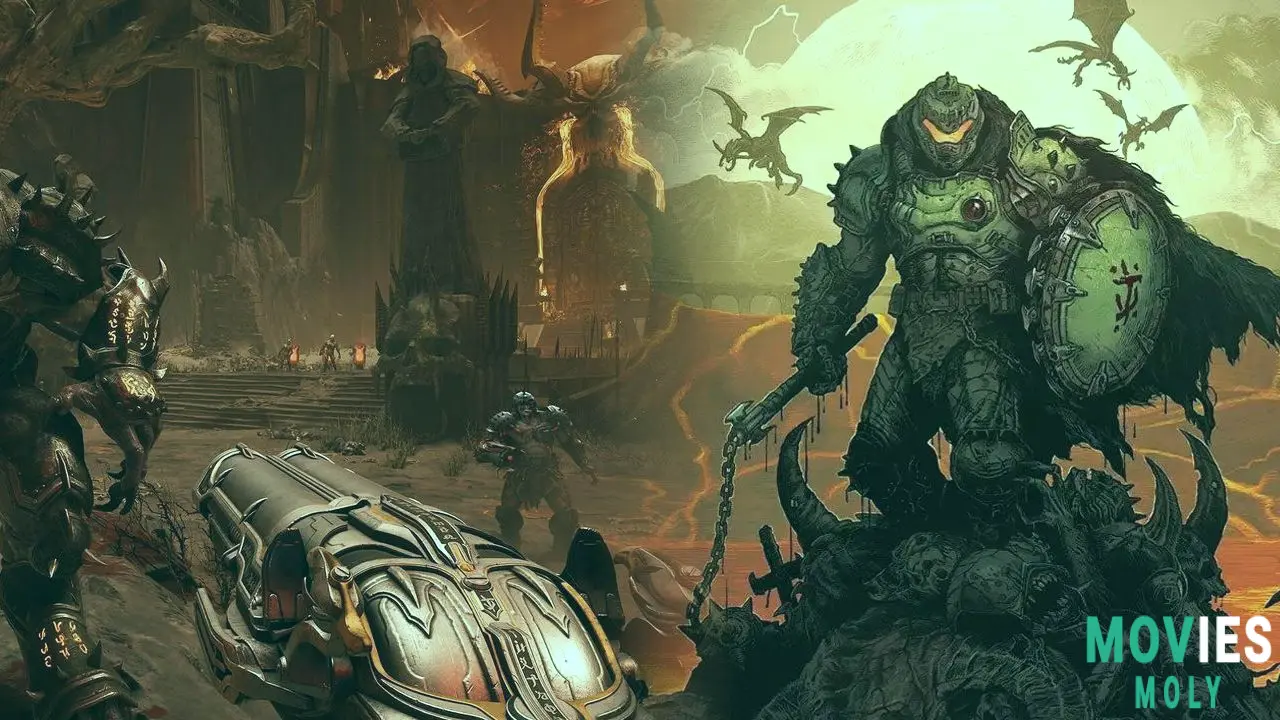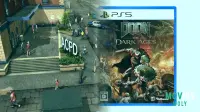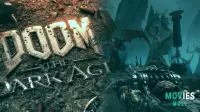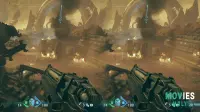Doom: The Dark Ages isn’t just another entry in the legendary demon-slaying franchise. It’s a bold remix of what Doom combat can be, wrapped in gothic castles, cosmic horror, and a wild dose of medieval flair. Id Software has taken the momentum from Doom Eternal and turned it into something older, heavier, and somehow more explosive.
Doom Slayer gets a mythic origin story with grand scale battlesThe campaign is a prequel to the 2016 reboot, but it doesn’t play it safe. Instead of relying on speed and agility like Eternal, The Dark Ages grounds the Slayer in a more weighty, deliberate form of violence. The story fills in the gaps about how the Slayer became what he is, trekking through a mix of UAC sci-fi, heavenly medieval realms, and hellish cosmic voids. It’s not deep storytelling, but it doesn’t need to be. When the plot gives you a reason to storm demon-infested castles, it’s doing its job.
What really stands out are the battlefield-sized levels. These are the biggest maps the series has seen, open environments where you’re not just facing demons—you’re fighting entire infernal armies. It feels like Doom meets Halo in a hellish mashup. You’ll see Titans clashing in the distance, but you won’t be able to join those fights. Instead, you’re stuck in the middle, turning the tide yourself with a mix of firepower and flesh-smashing melee.
The new shield mechanic flips the combat into a masterclass of offense and defense
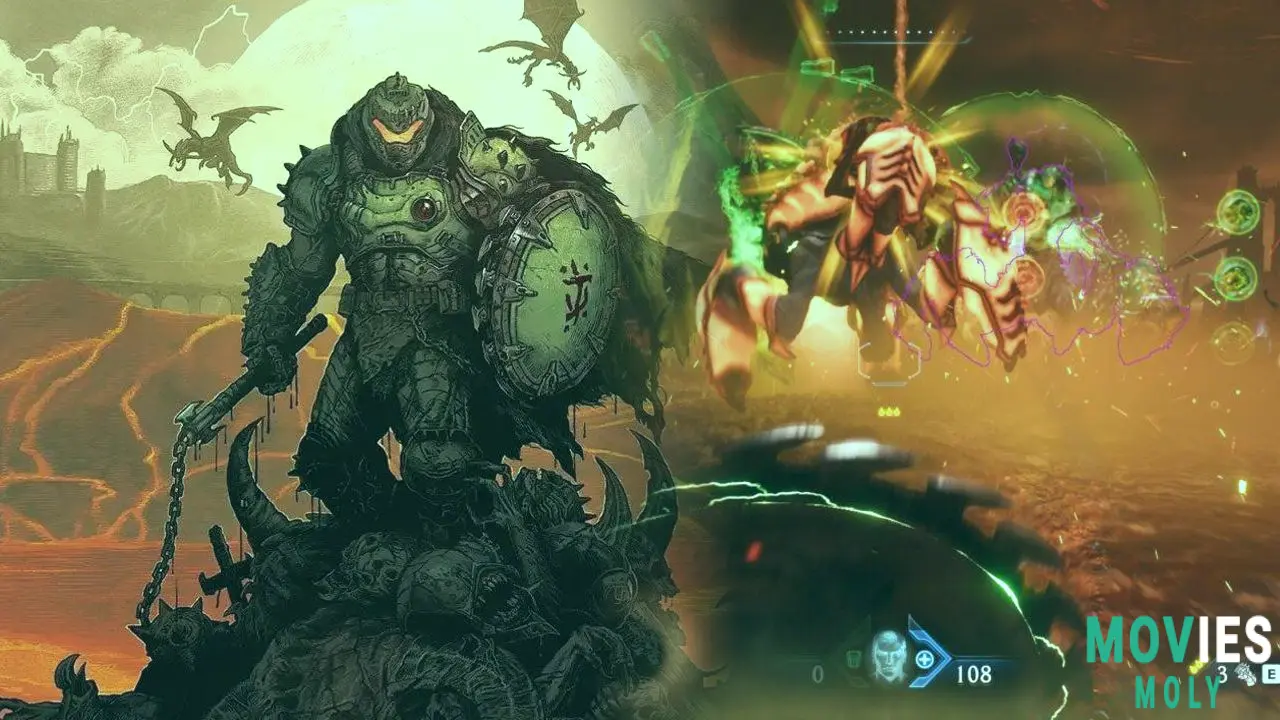
The most game-changing addition is the Slayer Shield. This isn’t just a tool—it’s your new core combo partner. You can block enemy projectiles, parry attacks to reflect them back, and stun foes with precise timing. It turns demon volleys into boomerangs of pain. Instead of dodging every shot, you’re now encouraged to stand your ground and turn their aggression into yours.
But the shield doesn’t stop there. It can be thrown like a sawed-off Captain America’s throw—decapitating crowds or immobilizing bigger enemies with a buzzing chainsaw effect. The shield bash lets you close distance fast, like a grappling hook with armor. This mix of defensive play and explosive counterattacks creates a new rhythm in combat. It’s fast, fluid, and feels absolutely earned.
Weapon systems evolve without losing that classic Doom punch
The arsenal is familiar but reimagined. Every gun has a medieval twist and a twin counterpart that lets you swap on the fly. There’s a steel ball launcher that feels like a cross between a cannon and a crossbow, and a skull-smashing pulverizer that’s more chaingun than crusher. The weapons never outgrow their usefulness, giving you constant reasons to experiment with loadouts.
One big change? No chainsaw. Instead, melee combat gets a revamp with a system that refills your ammo as you brawl up close. It pushes you toward aggressive play, rather than the ammo-management dance the chainsaw once forced. It works. Getting into a bloody hand-to-hand with a group of Imps while reloading your shotgun feels just as satisfying—if not more so—as sawing them in half used to.
Enemy design and numbers dial the chaos to a new extreme
You’re fighting classic demons with new roles and twists. Pinkies now charge as mounts with arching riders. Cacodemons from the Cosmic Realm have eerie new behaviors. The Vagary makes a welcome return as a grotesque mini-boss. Even the Cyberdemon feels appropriately monumental in this medieval hellscape.
Id has cranked the enemy counts way up. You’ll often find yourself surrounded, outnumbered, and still coming out on top. The combat systems are built around this. Every enemy has a weakness that can be exploited with any weapon. You’re no longer juggling specific tools for specific foes—you’re improvising on the fly, and it’s glorious.
Vehicle sections and dragons add flavor, but sometimes distract from the core
There are mecha fights and dragon rides. Yes, the Doom Slayer rides a dragon. These sequences break up the action, but they rarely match the intensity of the core combat. The mech battles feel like slow-motion punch-fests, and the dragon chases are more on-rails shoot-‘em-ups than freeform carnage. They’re cool in concept, but a bit hollow in execution. Still, they provide cinematic variety in a campaign that otherwise never lets you catch your breath.
The soundtrack soars, even without Mick Gordon
Finishing Move Studio steps in for Mick Gordon, and while they don’t redefine the sound like he did, they deliver what the game needs: high-energy thrash metal that keeps pace with the carnage. It’s not iconic, but it fits. There are no “industrial Prince” moments, but the music still fuels the slaughter in the right way.
Doom: The Dark Ages is the Slayer’s evolution through medieval grit and grandeurThis isn’t just more Doom—it’s different Doom that still feels like Doom. The slower pace, the larger battlefields, and the shield-based combat create a new archetype for the Slayer. It trades the aerial ballet of Eternal for a grounded, armored stomp through demonic legions. The story might wobble between myth and mess, but the moments it locks in—crushing a fortress of fiends with a shield slam, parrying a fireball into a demon’s eye, soaring on a dragon through a hellscape tower—those moments hit like a super shotgun blast to the chest.
Id Software didn’t just give us another title in the series. They gave us a new form for the Slayer to wear. And it fits perfectly.

